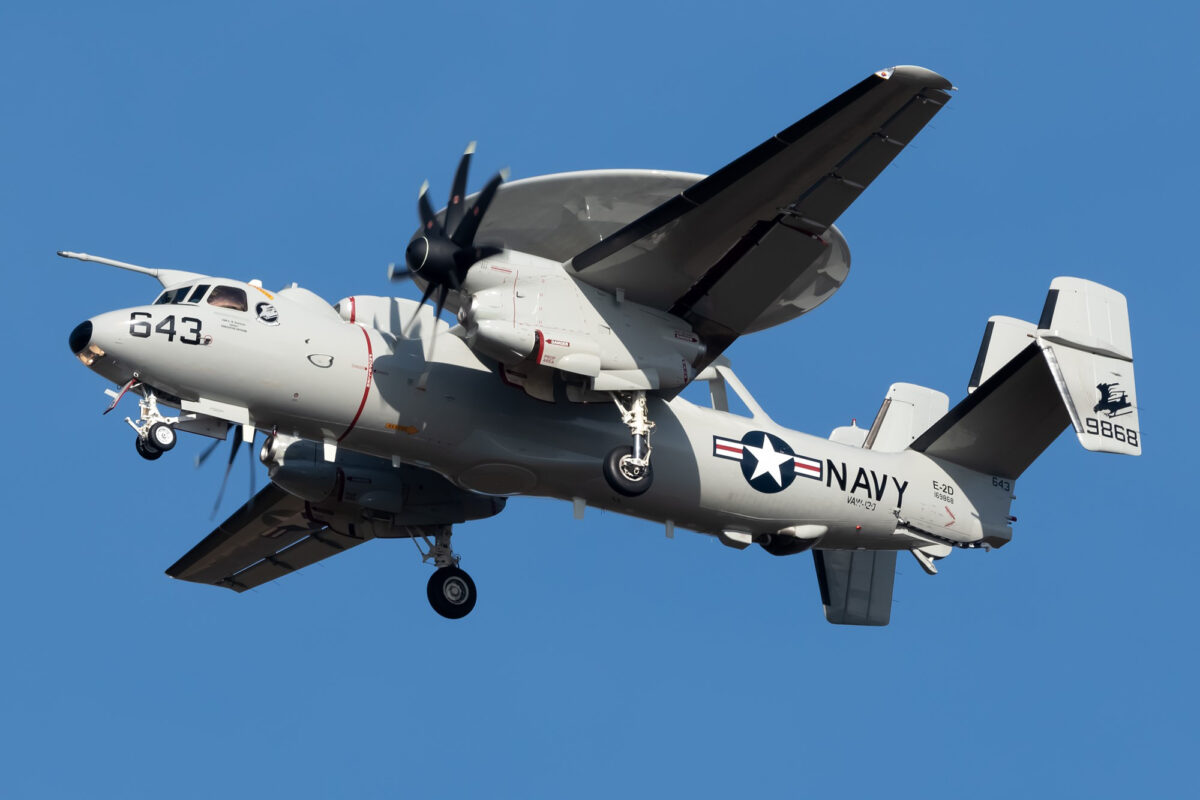The E-2D Advanced Hawkeye stands as a critical component in modern military operations, providing unparalleled airborne surveillance, command, and control capabilities. As the latest iteration of the Northrop Grumman E-2 series, the E-2D has significantly enhanced the role of airborne early warning and control (AEW&C) in contemporary warfare. With its advanced radar systems, communications suite, and data processing capabilities, the E-2D is often referred to as the “eyes in the sky,” offering a strategic advantage that is vital for both offensive and defensive operations.
Evolution of an Icon
The E-2 Hawkeye platform has been a cornerstone of the U.S. Navy’s airborne surveillance capabilities since the 1960s. Originally designed for carrier-based operations, the E-2 was intended to provide long-range radar coverage to detect incoming threats, coordinate air defenses, and guide fighter jets during combat missions. Over the years, the E-2 has undergone multiple upgrades, with the E-2D Advanced Hawkeye representing the most significant leap in capability.
The E-2D was developed to address the evolving needs of modern warfare, where the ability to detect and track increasingly sophisticated threats is more critical than ever. Introduced in 2007 and achieving initial operational capability in 2014, the E-2D builds upon the legacy of its predecessors while incorporating state-of-the-art technology that ensures its relevance on the modern battlefield.
.jpg)
The Heart of the System: AN/APY-9 Radar
At the core of the E-2D’s capabilities is the AN/APY-9 radar, a sophisticated system that provides 360-degree coverage and is capable of detecting a wide range of air and surface threats at extended ranges. The radar’s ability to track both conventional and stealth targets makes it indispensable in contemporary combat scenarios, where adversaries may employ a variety of tactics to evade detection.
The AN/APY-9 radar can simultaneously track multiple targets across different domains—air, sea, and land—providing commanders with a comprehensive picture of the battlespace. This radar’s advanced electronic scanning capability allows it to detect and track targets with a high degree of accuracy, even in challenging environments with high levels of electronic interference.
Command, Control, and Communication (C3) Hub
The E-2D is not just a surveillance platform; it is a command, control, and communication (C3) hub that can coordinate complex military operations in real-time. Equipped with an advanced mission computer and data link systems, the E-2D can process vast amounts of information and distribute it to other assets, such as fighter jets, ships, and ground forces. This capability allows the E-2D to act as a force multiplier, enhancing the effectiveness of other military assets by providing them with timely and accurate information.

The E-2D’s communication suite is also highly advanced, enabling secure, jam-resistant communications with a wide range of platforms. The aircraft is equipped with Link 16, a military tactical data link network that allows it to share information with other NATO forces, ensuring interoperability in joint operations. Additionally, the E-2D can serve as an airborne relay station, extending the range of communications for forces operating in remote or contested areas.
A Key Asset in Network-Centric Warfare
In the age of network-centric warfare, where the integration of various sensors and platforms is key to achieving dominance, the E-2D plays a crucial role. By providing a continuous stream of real-time data, the E-2D ensures that commanders have the situational awareness needed to make informed decisions quickly. This capability is particularly important in complex environments, such as the crowded airspace of modern naval operations or the rapidly changing conditions of land-based conflicts.

The E-2D’s ability to detect and track enemy aircraft, surface vessels, and missile launches from long distances makes it an essential tool for early warning and threat assessment. It also plays a vital role in managing the airspace over combat zones, directing friendly aircraft, and coordinating air strikes. In addition, the E-2D’s radar and sensors can detect incoming ballistic missiles, providing critical early warning to both naval and land-based forces.
Continuous Upgrades and Global Reach
The U.S. Navy has continuously invested in upgrading the E-2D to ensure it remains at the forefront of airborne surveillance and command capabilities. These upgrades include enhancements to its radar system, communications suite, and mission computer, as well as improvements to its software that increase its ability to process and disseminate information.
The E-2D is not only a key asset for the U.S. Navy but has also been adopted by allied nations, including Japan and France, as part of their defense strategies. This global reach underscores the E-2D’s importance in modern military operations and its value as a force multiplier in multinational coalitions.
Conclusion: The E-2D Advanced Hawkeye—A Vital Force Multiplier
The E-2D Advanced Hawkeye represents the pinnacle of airborne early warning and control technology. Its advanced radar, command and control capabilities, and robust communications suite make it an indispensable asset in modern warfare. Whether providing early warning of incoming threats, coordinating complex military operations, or acting as a communications relay, the E-2D ensures that commanders have the information they need to dominate the battlespace.
As military threats continue to evolve, the E-2D’s adaptability and advanced technology will keep it at the forefront of air and naval operations, safeguarding the security and interests of the United States and its allies for years to come. The E-2D is not just an aircraft; it is the ultimate force multiplier, a guardian of the skies, and a linchpin of modern military strategy.






